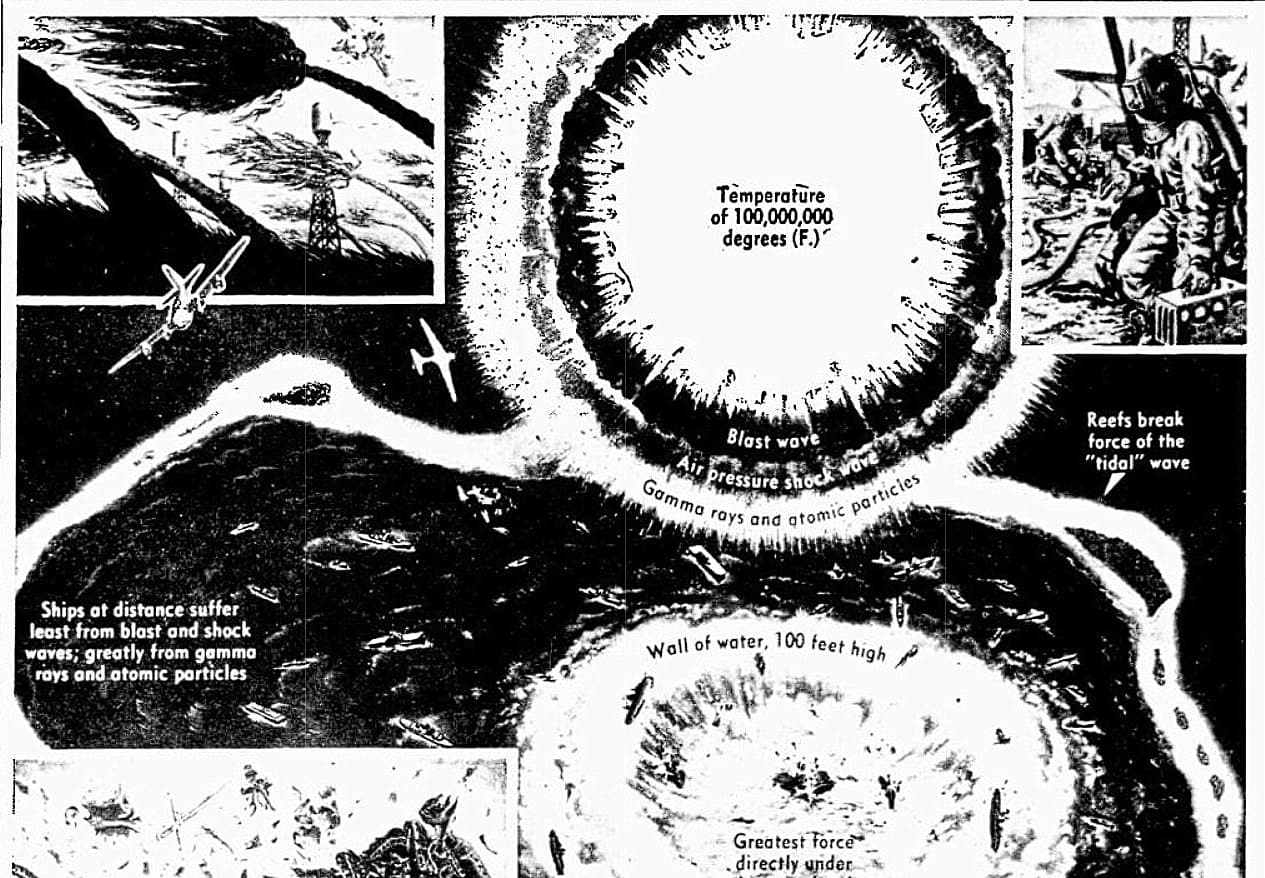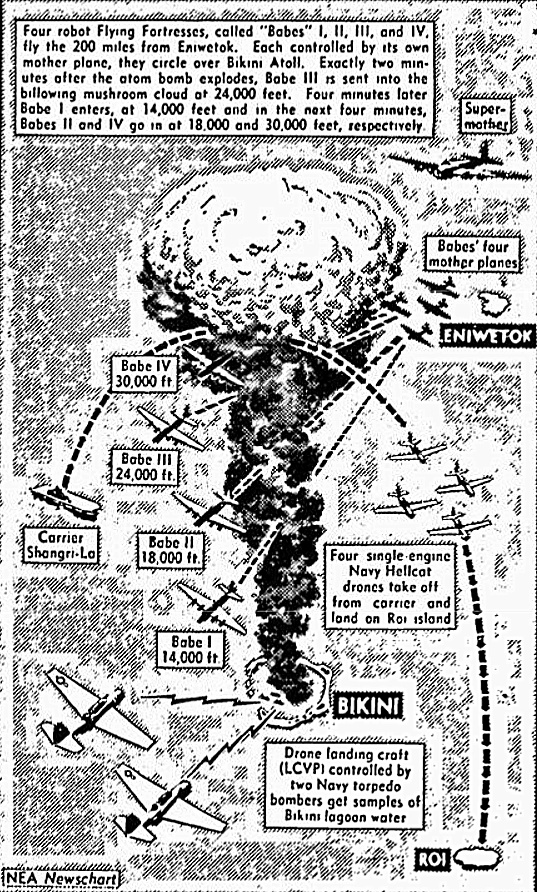The Pittsburgh Press (June 30, 1946)
WHAT SCIENCE FORESEES WHEN A-BOMB EXPLODES
Four waves to hit fleet inside lagoon
Blast will generate 100 million degrees
By the NEA Service
An atomic bomb will come hurtling down from a B-29 and burst over the lagoon at Bikini Atoll with a force equal to 20,000 tons of TNT.
It will explode with the brilliance of a second sun over the array of German, Jap, and overage American warships anchored in the lagoon. Operation Crossroads will be under way.
NEA Staff Artist Vic Donahue has sought to visualize that moment in the sketch at the left.


Mighty battleships with their heavy steel armor never before have been subjected to this blast, the most powerful explosion in the history of mankind.
What will it do to the ships in the lagoon?
Four waves to spread
When the bomb explodes, a temperature which scientists estimate at 100 million degrees Fahrenheit, is generated at the center of the explosion.
Four destructive waves travel out in all directions from this superheated center of violence. The fastest traveling wave will reach the water first. This is the wave of gamma rays or energy radiations, resembling the rays of radium or of giant X-ray machines. This wave travels with the speed of light.
Next will be the shower of atomic particles from the disintegration of the atoms of Uranium 235 or plutonium, whichever the bomb contains.
Shock wave follows
Behind this wave of radioactive particles comes the shock wave – tremendous air pressure traveling with the speed of sound. Finally comes the blast wave with yet greater pressures amounting to several tons per square foot.
It may be supposed that the bomb will explode several hundred feet above the water. The exact altitude, however, will be kept a military secret.
The battleship Nevada is to be at the center of the 75 ships and painted orange to aid the flier who drops the bomb. It is hoped that the bomb will explode directly over this ship.
Ship to be twisted
Many scientists assume that the Nevada will be twisted and torn by the fourth wave, the blast wave. Insert at the lower left of the drawing is Artist Donahue’s conception of the Nevada at the instant of explosion.
Ships at greater distances from the point of detonation will suffer less from the blast wave and even less from the third or shock wave which is not as forceful as the blast wave.
These ships, however, will nevertheless get strong doses of waves two and one, namely, the radioactive particles and the radiations. These are extremely penetrating and may pierce the thick steel walls of the ships. There is also the question as to whether or not the ships themselves will not be rendered radioactive by the bombardment of these rays.
Animals on ships
Guinea pigs, goats, and other animals will be on the ships in the lagoon in order that these possibilities can be studied. Some of the animals will be on deck, others deep in the ships.
After the detonation, scientists and military men, wearing lead-lined suits resembling in appearance those of divers, will board the ships with instruments to measure various types of radiations. Mr. Donahue has pictured this at upper right.
It is supposed that the explosion will cause a momentary saucer-shaped depression in the water. Its rim will consist of a wall of water, perhaps 100 feet high. At once this wall will begin to travel outward in a sort of “tidal wave.”
Reef to break up wave
One reason for holding the test within a lagoon is so that the coral reefs will break up this wave and prevent it from spreading too far in full force.
A reaction to the spreading wave will force water back into the saucer and perhaps into a great spout high into the air. But the idea that this spout will carry ships aloft seems fantastic in the extreme.
There will be many planes in the air at the time of the explosion to photograph it from various altitudes and distances. Robot planes controlled by radio and radar will be sent in closer than pilots would dare go.
Automatic cameras and recording instruments of various kinds will be mounted on steel towers on the atoll, as pictured at upper left.
